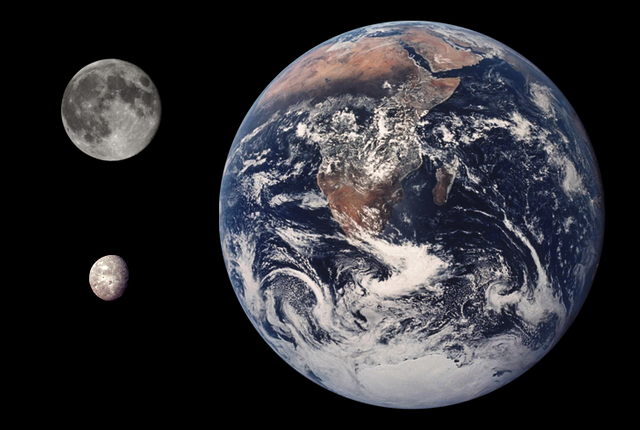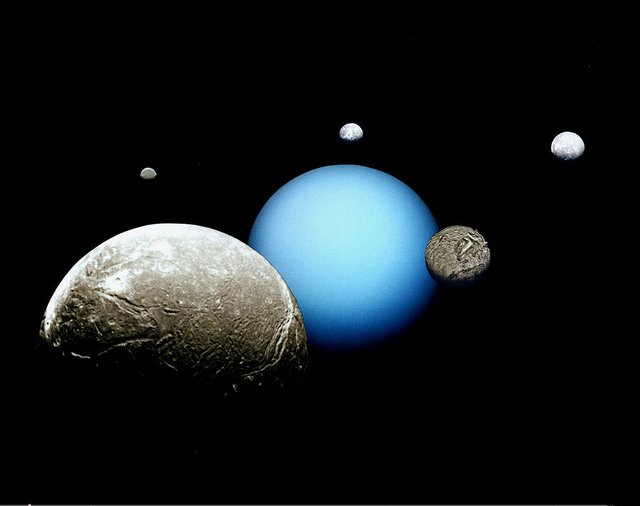Planetary moons #14 : Oberon
Oberon is the outermost and one of the 27 moons of Uranus. William Herschel discovered it in 1787 and is the second largest and largest satellite in Uranus. On the same day, he discovered Oberon and Titania, which I described to you lately.
The best Voyager 2 image of Oberon

Because of the huge distance, there are no better photos of this moon than the one above, made by Voyager 2 in 1986. The second Uranus satellite has a diameter of 1523 km and in the image below you can see its real size compared to the Earth and our Moon. It circles Uranus at a distance of 584,000 km as the outermost of the five major moons of this planet. This distance may change because Oberon has a large slope compared to the Uranus equator. The period of circulation around your planet is about 13.5 days, it coincides with the rotational period. This means that Oberon is always one side facing Uranus. Because (like all the moons of Uranus) Oberon circles the planet around its equatorial plane, and Uranus orbits the sun almost to the side, the moon experiences quite an extreme seasonal cycle. Essentially, both north and south poles spend 42 years in total darkness or full sun - when the sun rises near the zenith over one of the poles at each solstice. Can you imagine that? As if the sun was in the zenith all the time (up in the sky) for 42 years!
Size comparison of Earth, the Moon, and Oberon

It is assumed that Oberon was formed from scattered material around Uranus after the formation of the planet. Oberon's structure is a rocky core covered with an ice cloak. It is assumed that there may be a liquid water layer between the nucleus and the mantle. Oberon's surface is covered by a series of craters that may have been formed under the influence of asteroids and comets. Some craters are almost 210 km in diameter. The satellite also has many deep, elongated plains. It is assumed that they were created when the interior of the moon was still developing in the first years of its evolution. So far, the only probe that photographed the moon during a trip in January 1986 was Voyager 2. The image represents about 40% of the area, but only 25% have a clear resolution that enables geological mapping.
Uranus moons system - photo montage

As you can easily see, there is a lot of what remains unknown about Oberon and his companions. How they were created and what secrets can lurk under their surface is still a mystery. One can only hope that future generations will decide to send another Voyager-like probe to the Outer Solar System to investigate the Uranian satellites. These distant worlds can turn out to be amazing!
Greetings to lovers of Astronomy!
References:

Uranus has 27 moons? crazy. Oberon the outermost. Very cool indeed
Most of them are a mystery to us. We know a few about the biggest ones, but still not much.
More adventures in the future I guess? Hehe
This post has been voted on by the steemstem curation team and voting trail.
There is more to SteemSTEM than just writing posts, check here for some more tips on being a community member. You can also join our discord here to get to know the rest of the community!